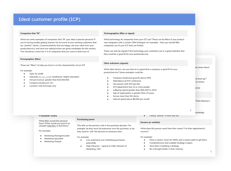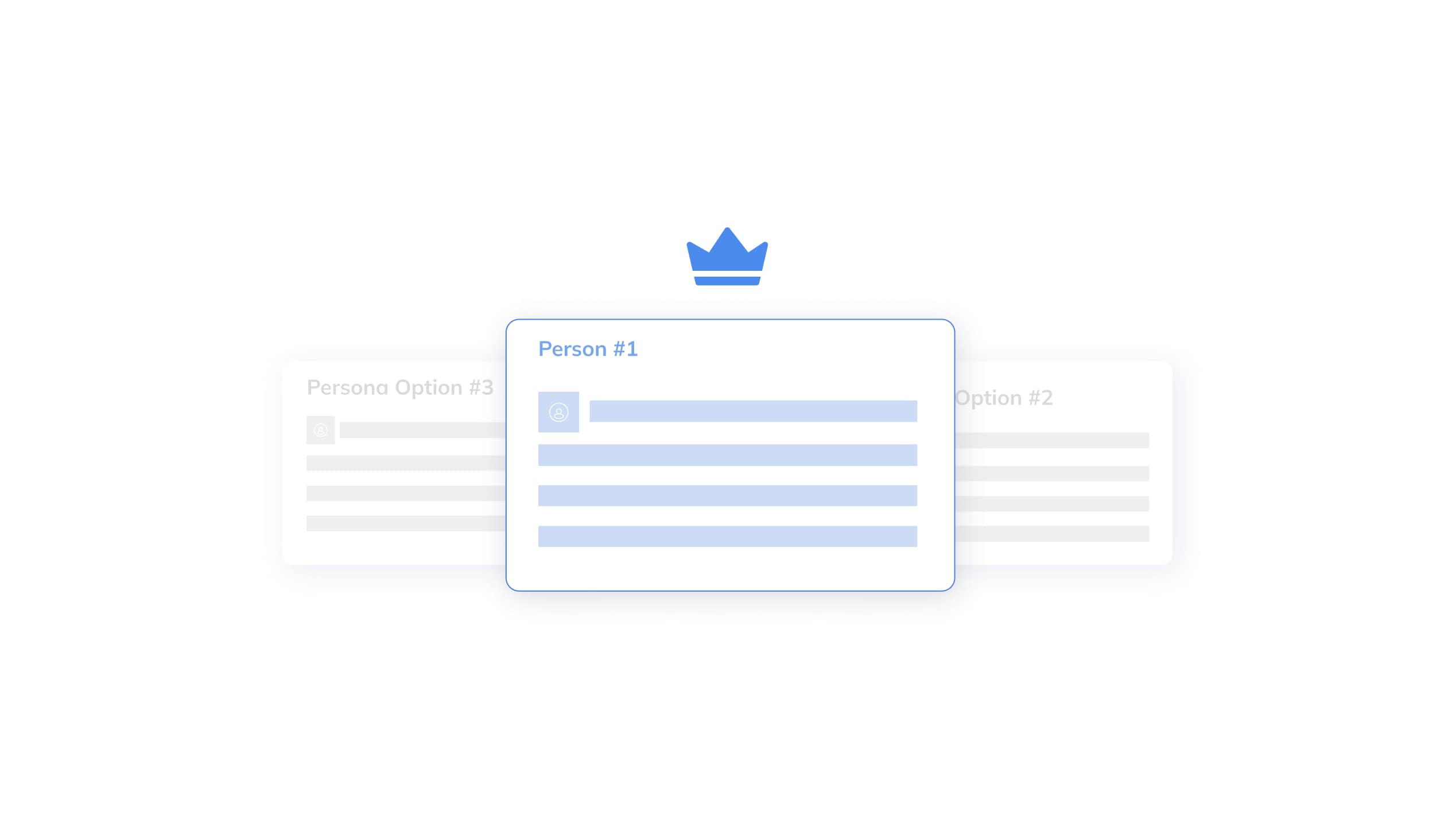You’ve got a great product, and a lot of people could really benefit from it, so why narrow your focus to one subsegment? Well, there are quite a few reasons. For example, your marketing team is only so big, your marketing budget only goes so far, and targeted messaging will always speak more strongly than general, one-size-fits-all positioning. To narrow and focus your marketing you’ll then need an ideal customer profile (ICP).
Creating a workable ICP model is one of the most foundational steps in your go-to-market strategy, and yet it’s one that so many businesses gloss over or do not want to nail down the specifics of because they feel that they are excluding part of their potential audience. This step, though often misunderstood, is not difficult. Here we’ll be looking at what core components you need to include to make a great ICP and the biggest mistakes leadership teams make when creating their own.

Create your B2B SaaS ideal customer profile with our free template
- Outline the filters and signals you’ll use to build your TAM, SAM and SOM
- Provide direction for your messaging and sales materials by defining simple customer personas
Why do you need an ICP?
There is no straightforward path to growth and all of the possible approaches that marketing provides mean that it’s all too easy to expend huge amounts of time and budget wastefully. Broadening your targeting to a large audience is one surefire way to waste your limited resources.
Having a proper ICP provides you a resource with which your content team can create targeted copy, your ABM efforts can list-build around, your ads campaigns can target, and you can better structure your messaging and positioning. In sum, it helps your team work smarter, not harder.
What do people get wrong when creating their own ICP?
Well-executed ICPs are not common among B2B SaaS companies. In fact, many will not have any sort of ICP documentation at all. Besides just not having one, the biggest mistakes these businesses make when trying to create their ICP can be broken into three categories: going too broad, missing actionable details, and never revisiting their ICP.
Broad ICPs
Targeting is the name of the game in marketing, and without a niche to start with and use to kickstart your growth, you will almost certainly struggle to produce content that speaks impactfully to anyone because you are trying to speak to everyone. If a farmer is trying to choose between Donagh & Sons (The farmer’s bank) and Ameribank (The people’s bank), they will be instantly more attracted to the option that feels like it’s designed for them.
As your business grows, you’ll have time to expand into your serviceable addressable market (SAM) and total addressable market (TAM), but you won’t be able to get to that point without selecting a viable serviceable obtainable market (SOM).
Unactionable ICP details
Many B2B SaaS companies will write ICPs as a B2C company would. That is, creating an ICP based on the general personality traits, habits, and surface-level characteristics they imagine their ideal customers have. While knowing that you want to be selling to Beaumont, who drives a Kia, cooks every night, and does Yoga on the weekends, can be helpful for getting your content writers in the right voice, it will not help your other departments or GTM strategy as a whole.
Instead, you’ll need to establish which objective firmographics, technographics, geographics, etc. describe your ideal buyer. Think about your ads and ABM campaigns: what information will your marketing team need to create an audience or list of leads?
An unchanging ICP
Not only will you need to adapt and add to your ICP (or even create a new, secondary, or tertiary ICP) as your business grows, but you may need to abandon it altogether and make a substantial pivot. Marketing is a science and requires continual experimentation. Your first assumptions are often incorrect, and you’ll only be able to correct them by testing campaigns, seeing what works for what audience, and going back to the drawing board to redirect your GTM strategy.
So, what makes a great ICP?
To avoid the common pitfalls of creating an ICP for your B2B SaaS marketing strategy, it’s crucial to continually think about what the ICP will be used for: Finding, qualifying, and targeting a specified audience that will be the best fit for your product. Remember that an effective ICP has:
- An audience size small enough to hone in your marketing but big enough to kickstart your growth
- Details and characteristics that can be leveraged by every team member in the marketing function, from content and design to advertising and account-based marketing
- And an up-to-date description—revisit your ICP frequently and don’t be afraid to make radical revisions to it as you learn new things along the path to product-market fit




